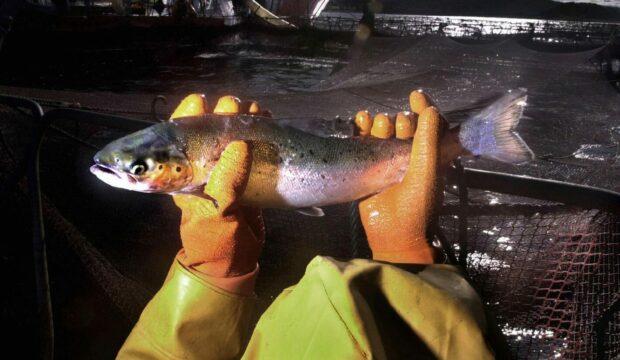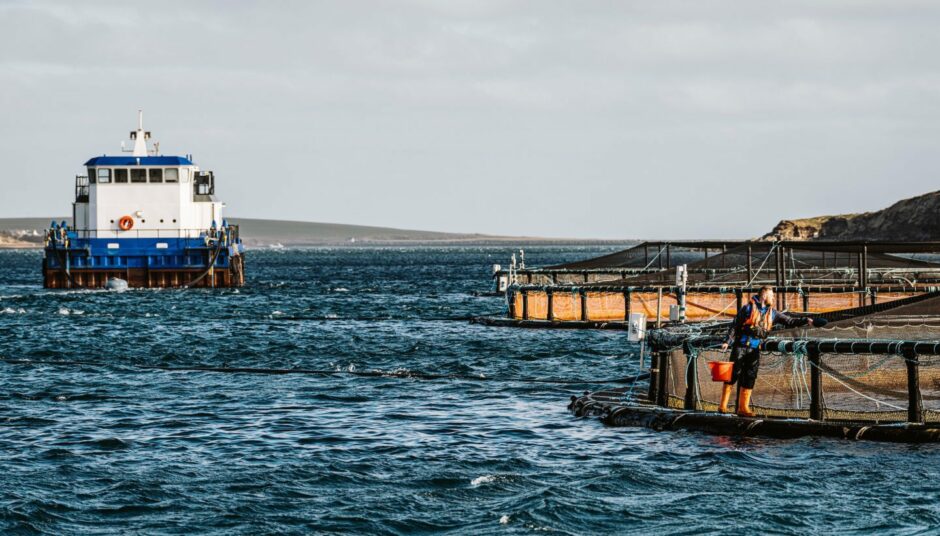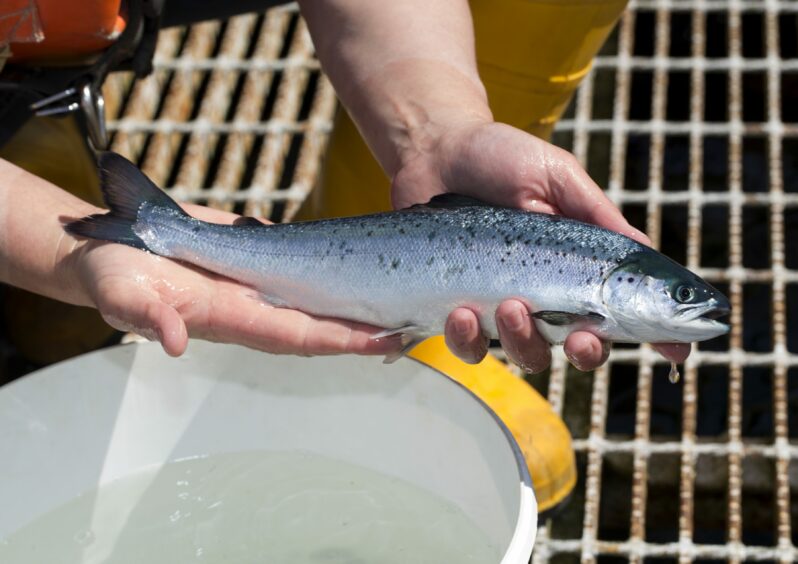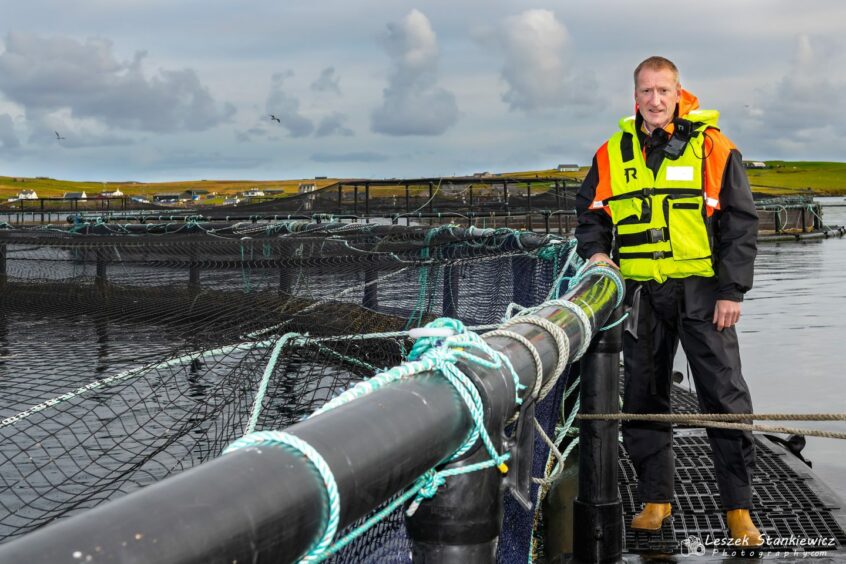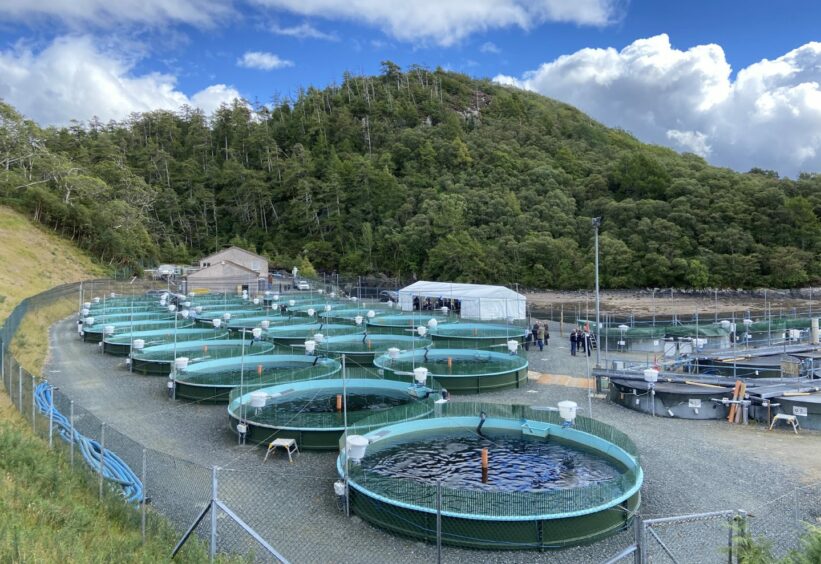Trade body Salmon Scotland is endorsing an online early warning system to identify harmful organisms which could help seafood producers avoid “devastating” consequences of harmful micro organisms.
The move to create an early warning detection system for water quality is the latest in a series of initiatives by Scotland’s aquaculture sector to address and adapt to climate change.
Researchers at the Scottish Association for Marine Science (SAMS), Marine Scotland Science (MSS) and Scotland’s Rural College (SRUC) have shared their water sampling experience with the country’s trout and salmon producers.
The system will standardise and share water quality data – a key first step towards earlier detection of marine organisms which can affect fish health.
Why is early warning critical?
Earlier warning of the nature, location and extent of marine organisms is proving increasingly critical as seas get warmer due to climate change.
Just last week, a survey by the Marine Conservation Society reported an increase in the abundance of jellyfish types around the UK and Ireland, including species normally found in warmer waters.
Around Scotland’s west coast and islands, microscopic jellyfish – tiny translucent jellyfish measuring as small as 2mm and therefore almost invisible to the naked eye – are considered to have been a key contributor to the reduced survival of farmed salmon this summer.
Slump in survival figures
Data published by Salmon Scotland for September shows survival fell to 95.3%; 2.4% down on the past four-year average of 97.7% and equating to a loss of 2.8 million fish across the sector.
Salmon Scotland chief executive Tavish Scott said: “Whether on land or sea, raising animals outdoors inevitably comes with risks as the climate continues to change and evolve, but that makes environment-induced events such as micro jellyfish no less devastating to the farmers caring for those animals day in, day out.
“It’s why we’re so committed to increasing our understanding of new and emerging threats in order to better safeguard the health and welfare of our salmon.”
SAMS associate director for science and education Keith Davidson said: “SAMS has operated an early warning system to mitigate the impacts of harmful algal blooms on shellfish. Now, we’re working with SAIC and sector to refine this approach to support salmon aquaculture.”
This includes several applied research projects aimed at the identification, mitigation, and management of environment-related health challenges, and represents a total investment now exceeding £3 million.
Actions that farmers can take include:
-
- Drawing fish deeper down and away from the water’s surface where many of these organisms can thrive
- Boosting oxygen levels
- Transferring fish elsewhere including, where appropriate, altering the harvest schedule.
Delivered by the Sustainable Aquaculture Innovation Centre (SAIC) and funded by the Scottish Government, the cross-sector project was commissioned by the Scottish Farmed Fish Health Framework (FFHF); a key aim of which is to respond to new and developing challenges.
Behind the scenes: Salmon Scotland chief executive Tavish Scott
Scotland’s salmon farmers care for their fish every day of the year, in some of the country’s most remote locations and in the very harshest of conditions, Tavish Scott writes.
Farm teams are supported by a network of expert veterinarians and fish health experts, while Scottish salmon farms hold independent third-party certification that pushes them to go further on animal welfare and environmental protection.
Farm-raised salmon spend around two years in the sea, which means they face challenges just as animals do in the wild, including predators and environmental threats.
The care provided to farm-raised Scottish salmon means survival rates from egg to plate are around 80%, compared to the wild salmon survival rate which is thought to be less than 1%.
While the longer and warmer days of summer provide the right conditions for excellent fish growth, the slow-grown nature of salmon farming means they face greater exposure to environmental threats.
Despite the best efforts of our farmers, there are sometimes issues which they cannot compensate for. During September, we saw an increase in minuscule, but potentially harmful, plankton and jellyfish in Scotland’s waters.
Stinging cells can be fatal to salmon and trout
These jellyfish blooms are naturally-occurring and have been reported in Canada, Norway, Chile and Ireland. The organisms are as small as 2mm and translucent, making them almost impossible to spot, but their stinging cells can injure or be fatal to fish such as salmon and trout as they brush past.
Unfortunately, the latest figures for September recorded a higher-than-normal number of fallen stock, the majority of which we believe succumbed to jellyfish blooms.
As a sector, we are now redoubling our efforts to better understand plankton and jellyfish behaviour and develop new techniques to protect our fish.
Last summer, Seafood Shetland was awarded nearly £55,000 from the Coastal Communities Fund to support the early detection of algal blooms which present a major threat to shellfish.
Already, salmon farmers monitor water quality daily at each farm to check for the presence of harmful plankton and record water quality parameters including temperature, salinity and clarity.
Should a threat to the fish be observed, mitigation can include adjusting feeding regimes, attracting fish deeper in the pen and ensuring the water is appropriately oxygenated.
If the threat is wider-reaching, farmers may choose to remove their stock from the area through harvesting or relocation.
